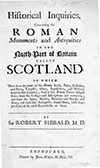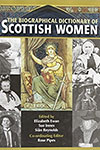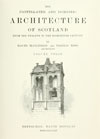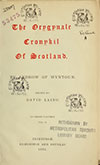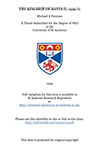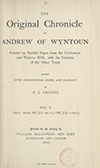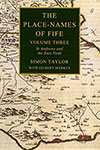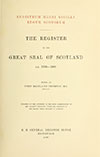

Inchmurtach was a fortified palace belonging to the Bishop of St Andrews however no visible remains are left and the site is occupied by a 17th century doocot.
The site occupies slightly raised ground in an otherwise largely flat landscape which drops away to the east to the Kenly Water, and the name derives from the Gaelic for Murdoch’s inch or low-lying land beside a river. Historic Environment Scotland give a grid reference to the south of the Kenly Water, which would perhaps be a slightly strange location being on the opposite side of the bank from St Andrews, however the actual location is believed to be around where the doocot now stands.

When the first building was constructed is unclear, however a Búadach or Buathac of Inchemorthac and his son, Baldwin the Scot, are on record in the late 12th century. Some time between 1215 and 1225 Simon of Ynchemurthac witnessed a grant by Adam of Stawell, lord of Balmerino, to St Andrews Priory of 15 acres of land which his uncle, Sir Henry Revel, lord of Balmerino, had previously granted to them.
Inchmurtach was evidently a property of St Andrews Priory and a residence of the Bishop by this time as William Malvoisin, Bishop of St Andrews, died there in 1233. Numerous charters were signed at Inchemurthoc or Inchemurtahach by Malvoisin’s successor, David de Bernham, in the 1240s and early 1250s. A later bishop, Gamelin or Gamelinus, signed various charters at Incheomath or Inchmurdo in the 1260s and early 1270s before dying there of palsy in 1271.
William Fraser, Bishop of St Andrews, signed several charters at Inchemorth or Inchemab’ before being succeeded by William de Lamberton in 1297. Various sources state that it was Lamberton who built the palace of Inchmurtach however since two earlier Bishops died there it is likely that whatever he built either added to or superseded an earlier building. Certainly he was responsible for repairing St Andrews Castle after 1314 and building or remodelling “fortilizata maneria, at Inchmurtach, Monimail, Dairsey, Tory, Mukard, Monymusk, Linkton, Ketens, Lasswade and Le Stow in Wedal.”
Following Lamberton’s death in May 1328 the revenues from Inchmurtach were temporarily assigned to Robert the Bruce’s son and heir, David, and his wife, Joan of England, who were known as the Earl and Countess of Carrick despite being just 4 and 7 years old respectively. In 1329 the young couple received six chalders and one and a half bolls of oats from the “manerio de Inchemorthauche” and two chalders and six bolls of red squirrels from the “balliuo de Inchemorthau”. On the 7th of June 1329, following the death of his father, David ascended to the throne as David II but continued to spend a lot of time at Inchmurtach with Joan.
On the 2nd of August 1362 William de Landallis wrote a testimonial letter at Inchmurtach recording the purgation of William of Bamburgh for incontinence. David II spent part of the following year with the Bishop at Inchmurtach, and in April 1363 married his mistress, Margaret Drummond, there as his second wife. Margaret was the widow of Sir John Logie of Logie and the daughter of Sir Malcolm Drummond and Margaret Graham, Countess of Menteith.
A thousand thre hundyr sexty and thre
Yeris efftyr the Nativité,
In Inchemortho the King Davy
Weddit Dame Mergret off Logy
In the moneth off Aprile.
Thai ware togiddyr bot schort quhile.
The Historians of Scotland, Volume 3
Edinburgh, 1872
Their union was a controversial one. David II was childless at this time and so the Crown was set to pass to Robert Stewart, the son of David’s sister, Marjorie Bruce, and Walter Stewart, 6th High Steward of Scotland. The marriage provoked a rebellion led by the Stewarts and also involving the Earls of Douglas and March however in May 1363 David held a parliament at the palace of Inchmurtach where the rebels, including Robert Stewart and his sons, pledged their allegiance to the King.
Queen Margaret was seemingly resident at Inchemurthach the following year when a payment of 4s. 4d. was made to stage players for her entertainment, however it reverted to its use as the Bishop’s palace with William de Landallis and Walter Trail issuing charters there in the 1380s and 1390s.
Little seems to be written of Inchmurtach subsequently, perhaps suggesting that it had fallen out of use. In April 1601 James VI granted to Robert Hamilton, eldest legitimate son and heir apparent of Patrick Hamilton de Inchmurtho-park, and his heirs the “pomerium, wardam et locum” of Inchemurtho (religious boundaries, ward and place), with the mill known as Craiginwar, the mill lands, “astrictis multuris terrarum” of Byrehillis, Polduf, Kinglassie and Kingask, in the lordship of Byrehillis, which Patrick had resigned in his favour.
Later in the 17th century a doocot was built on part of the foundations of the palace, probably using stone from the building. Rectangular in plan it measures around 7.5m east to west by 5.2m, with a doorway on the west side and a rat course running around it. The roof is pitched and pan-tiled, although it was previously slated, and features later table skews surmounted by ball finials at each gable. A pigeon entrance rises at a shallower pitch from the middle of the south side of the roof.

Adair’s map of The East Part of Fife, published in 1684 but based on earlier work, shows a tower just south of Boarhills beside which is some indistinct text which appears to read “D: Mardo his hous”. This may refer to Inchmurdo or Inchmurtach.
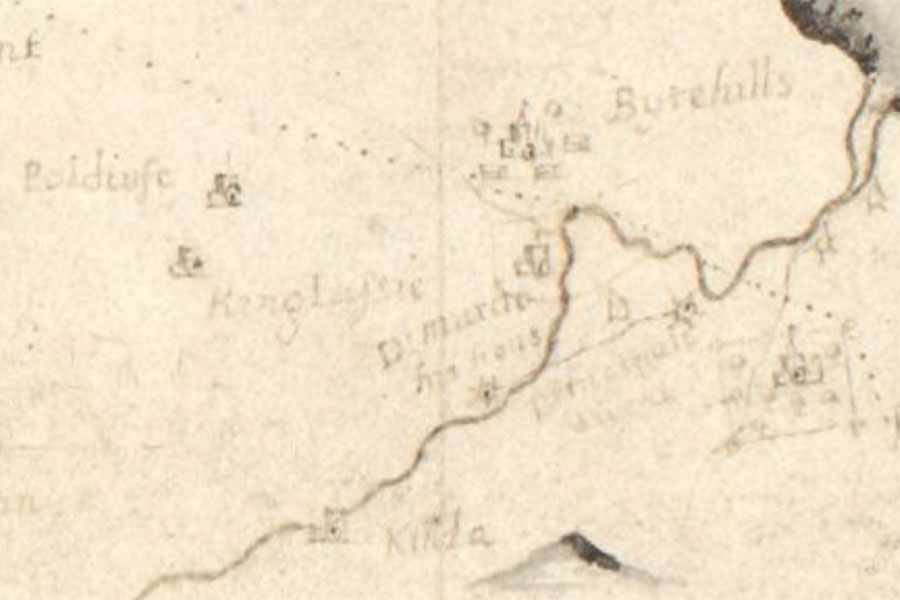
John Adair, 1684image courtesy of NLS
By 1703 “only the Ruins, and the Walls of a Chapel” were to be seen at the site, by which time the land was being farmed.
Archaeological investigations of an untilled triangle of land on the edge of the escarpment in 1983 uncovered a stone-lined well, a partially stone-lined water-logged depression and possible wall alignments. The trace of a possible approach road was also noted.
Today the site falls within a field with no hint of the former palace besides the doocot.

Alternative names for Inchmurtach
Enchemurthonw; Enchemurthow; Inchemab'; Inchemathach; Inchemorthac; Inchemorthau; Inchemorthauche; Inchemortho; Inchemurtach; Inchemurtahach; Inchemurthach; Inchemurthauc; Inchemurthauch; Inchemurtho; Inchemurtho-park; Inchemurthoc; Inchemurthoch; Inchemwrthew; Inchemwthow; Inchemyeth; Incheomath; Inchmachac; Inchmarthow; Inchmerahat; Inchmorthac; Inchmorthach; Inchmurahat; Inchmurback; Inchmurdach; Inchmurdo; Inchmurdoch; Inchmurthauch; Inchmurtho; Inchmurthow; Inchmurthowis; Inchomeyoth; Inschemurtho; insulam Murthach; Kenlygreen House; Lower Kenly; Palace of Inchmartrick; Ynchemurthac; Ynchemurthoes







